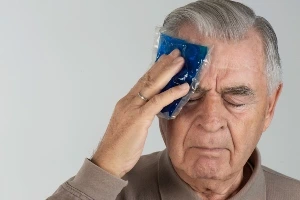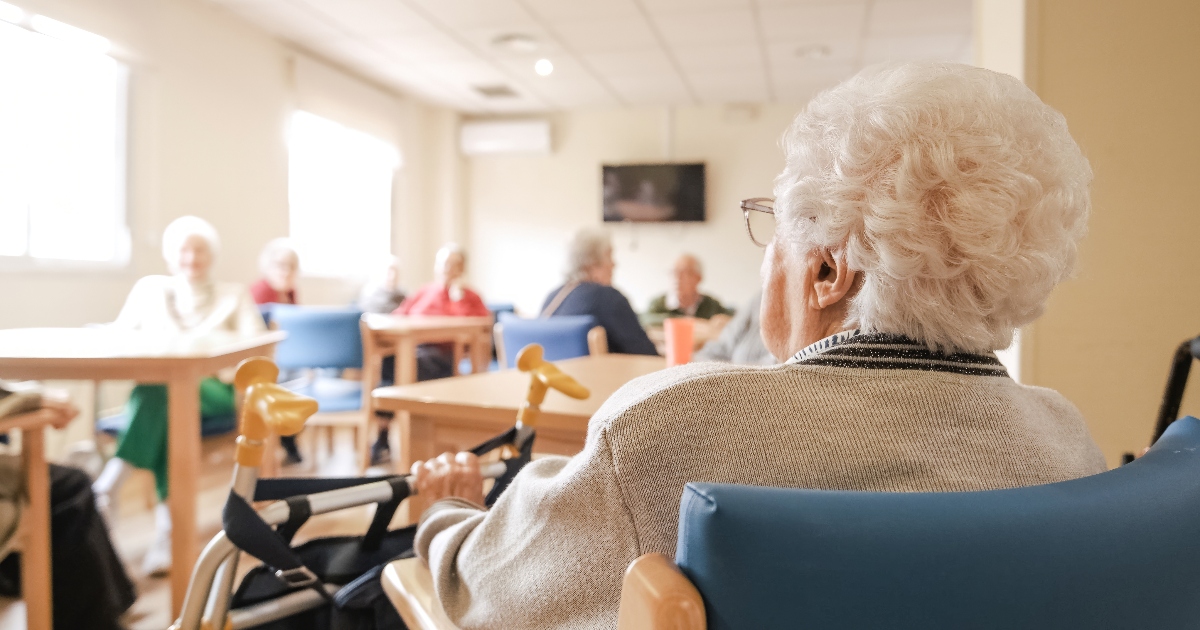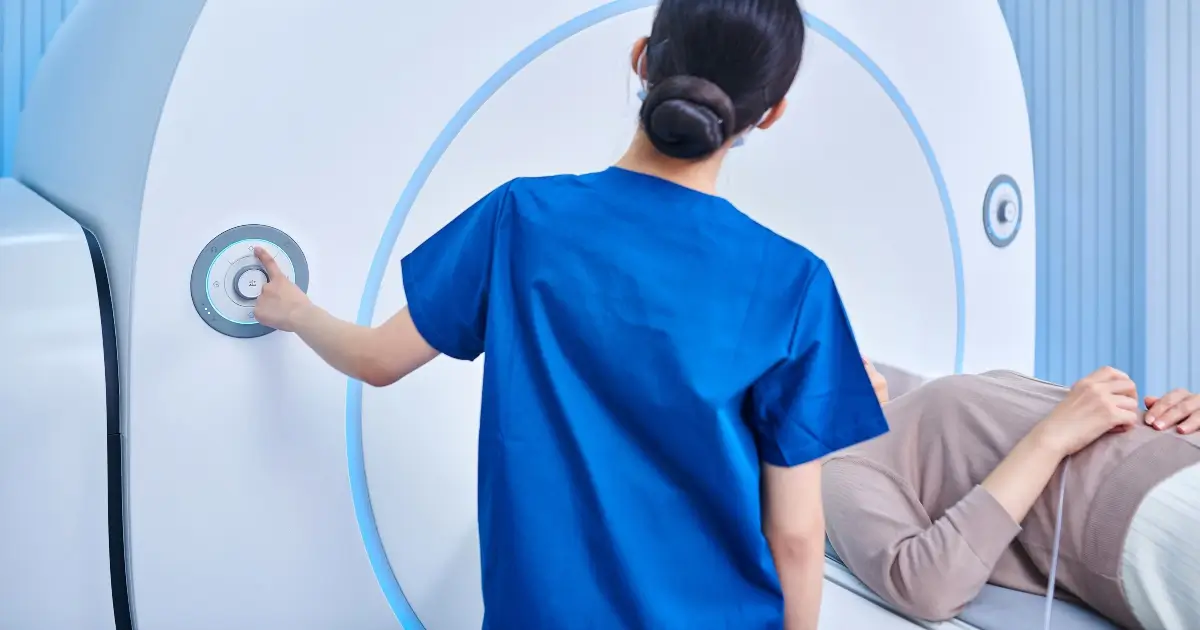
It is upsetting to discover your loved one in a nursing home suffered a brain injury. If this happens, it is important to find out whether it was an unavoidable accidents or the result of nursing home abuse. Understanding the warning signs could help to protect your loved one.
Brain injuries caused by nursing home negligence could mean that you and your family may be eligible to pursue a claim. In this blog, we discuss brain injuries that are more common in nursing homes and what signs may indicate a brain injury was the result of nursing home abuse.
At PKSD, our knowledgeable Albuquerque nursing home abuse attorneys are prepared to help you understand your legal options. Not sure if you have a case? We offer a completely free initial consultation to discuss your situation and potential legal options.
Call to schedule a free case review today: 505-677-7777.
Brain Injuries That Happen in Albuquerque Nursing Homes
Albuquerque nursing home residents may be at risk for several common types of brain injuries that families should recognize and monitor:
Subdural Hematomas
Subdural hematomas are an injury that causes bleeding between the outermost layers of the brain’s protective membranes. Even minor impacts can cause significant bleeding. Residents taking anticoagulant medications (blood thinners) are most at risk of subdural hematomas. These drugs inhibit blood clotting, which makes any fall or head injury more likely to result in a brain bleed.
Traumatic Brain Injuries From Falls
Falls remain the leading cause of traumatic brain injuries (TBIs) in nursing homes. When a resident hits their head on the floor or a wall, the impact can damage brain tissue and cause loss of function in affected areas.
These TBIs are particularly concerning when they happen during understaffed evening shifts and there are no witnesses. Any time there is a shortage of staff, residents are at risk of being unattended after an injury, potentially for extended periods, without receiving the immediate, potentially life-saving medical help they need.
Hypoxic Brain Injuries
Hypoxic brain injuries occur when the brain does not get the oxygen it needs. Unfortunately, these injuries can cause permanent damage in just minutes. In nursing homes, hypoxic brain injuries may result from various incidents, including:
- Choking
- Medication errors
- Cardiac arrest or stroke
- Respiratory issues
- Incorrect placement of a breathing tube
- Blocked or faulty breathing tubes
- Other underlying medical conditions
Repeated Mild Concussions
While a single mild concussion might seem insignificant, elderly residents suffering multiple impacts can develop injuries that become more serious, resulting in lasting harm. These injuries may often go undocumented in a resident’s medical record, particularly in facilities where there are high staff turnover rates.
Coup-Contrecoup Injuries
Coup-contrecoup brain injuries are very distinct and occur where there is an impact to both sides of the skull during a fall. What this means is that both the initial impact site (coup) and the opposite side (contrecoup) sustain damage.
If your loved one suffers this type of brain injury, it is vital that you investigate the cause. Often these injuries can result from a fall, but many falls are the result of nursing home negligence or even abuse. Coup-contrecoup injuries may occur in a nursing home due to:
- Inadequate safety measures or safety measures not properly being followed
- Improper transfer/lifting of a resident
- Inexperienced or poorly trained staff
- Staffing shortages
- Inadequate supervision of staff
- Faulty transfer/lift equipment
Secondary Brain Injuries
An initial brain trauma can trigger secondary injuries, including brain swelling, increased pressure, and reduced blood flow. Prompt medical intervention of these injuries prevents these complications. Yet many understaffed facilities today may delay transferring an injured resident to emergency care.
How to Identify Traumatic Brain Injuries in Residents
Key symptoms of a TBI often mimic age-related conditions or medication side effects, making it harder for family members to recognize whether or not their loved one has sustained a TBI. Some key warning signs and symptoms to watch for include:
Physical Warning Signs
The physical warning signs to watch for may include:
- Any sudden, atypical or unexplained coordination problems
- Changes in pupil size or sensitivity
- Unexplained bruising, swelling, or lacerations on the head, face, or neck.
- Unusual ear or nose drainage, which may indicate skull fractures.
Cognitive Changes
Monitor for confusion that exceeds the resident’s baseline mental status. Sudden disorientation, memory problems, or difficulty focusing on conversations may signal brain trauma. Pay attention if your typically alert loved one becomes unusually lethargic or shows dramatic attention span changes.
Behavioral Shifts
Families should be concerned when usually calm residents display uncharacteristic agitation, combativeness, or emotional volatility. Also, be concerned if your loved one suddenly shows signs of the following:
- Withdrawal
- Increased sleepiness
- Flattened emotional responses in previously engaged individuals
These behavioral changes often appear after the physical trauma has occurred.
Communication Alterations
Note any new speech difficulties, including slurred words, trouble finding words, or inappropriate responses to questions. Some residents with brain injuries struggle to understand the spoken language they previously understood without difficulty.
Sensory Disruptions
Complaints about blurred vision, ringing in the ears, unusual smells, or heightened sensitivity to light and sound warrant immediate examinations. These sensory disturbances often indicate brain trauma that affects specific neural pathways.
Sleep Disturbances
Significant changes in sleep patterns, especially difficult awakening or unusual drowsiness during regular waking hours, may indicate increased pressure within the skull.
Signs Nursing Home Abuse May Have Caused Your Loved One’s Brain Injury
Several red flags may suggest potential abuse rather than an unavoidable accident. When investigating a resident’s brain injury, these factors could determine if negligence or abuse plays a role.
Inconsistent or Changing Explanations
Staff members who provide contradictory accounts of how an injury occurred might be an indication they are trying to cover up negligence or abuse. Watch for explanations that evolve or differ between staff members.
Delayed Medical Treatment
Legitimate accidents prompt immediate medical response. If a facility waited hours to seek medical attention for your loved one or to transfer them emergency care after a head injury, it could be a sign of negligent care.
History of Previous Falls or Injuries
Repeated incidents suggest systemic problems with care. Review medical records for patterns of injuries, especially if they occurred under similar circumstances or involved the same staff members.
Common Nursing Home Abuse That Results in Brain Trauma
Several forms of nursing home abuse can lead to severe brain injuries in Albuquerque facilities. When families understand these patterns, it helps them identify potential mistreatment:
Direct Physical Abuse
Intentional acts of violence, such as the following during transfer, could cause TBIs.
- Hitting
- Pushing
- Shoving
- Aggressive handling
These actions often leave distinctive injury patterns like bruising or wounds inconsistent with reported accidents. Several facilities have faced litigation for staff members who physically assaulted vulnerable residents.
Neglect and Abandonment
Failure to provide necessary supervision leads to preventable falls when residents with mobility issues attempt self-transfers without assistance.
Neglect also includes failure to maintain walking aids, properly adjust bed heights, or respond to call buttons. Many Albuquerque facilities struggle with staffing ratios, particularly during overnight shifts.
Improper Restraint Use
Physical restraints and chemical restraints intended to control behavior can cause brain injuries. Residents who are under physical restraints have increased fall risk when they attempt to free themselves, while excessive sedation leads to unsteady gait and disorientation.
Medication Errors
Incorrect medication administration can cause hypoxic brain injuries through respiratory depression, dangerous blood pressure fluctuations, or adverse drug interactions.
Opioid pain medications, when administered in excessive doses or with improper monitoring, can slow breathing to unsafe levels and impact brain function. Similarly, incorrect dosing of blood pressure medications may cause hypotension, leading to insufficient blood flow to the brain.
Environmental Hazards
Failure to address facility dangers like poorly maintained floors, inadequate lighting, or unsafe bathroom fixtures creates fall hazards. Improperly secured furniture and equipment can tip over onto residents. These environmental failures could lead to head injuries, making nursing home facilities liable.
Malnutrition and Dehydration
Chronic malnutrition and fluid deprivation lead to weakness, confusion, and electrolyte imbalances that increase fall risk. Severe dehydration also reduces the protective cerebrospinal fluid cushioning the brain. These conditions develop gradually but create acute injury vulnerability.
Inadequate Assessment and Care Planning
Failure to properly evaluate fall risks, medication side effects, or changing health conditions prevents the implementation of appropriate safety measures. Many brain injuries occur when facilities fail to update care plans after medical changes or previous falls.
How to Prevent Brain Injuries in a Nursing Home
When your loved one resides in a nursing home, proactive steps can significantly reduce brain injury risks. These preventive measures create a safer environment:
Thorough Facility Evaluation
Before you place your loved one in a nursing home, inspect potential facilities for environmental safety features like grab bars, non-slip flooring, and adequate lighting. Review state inspection reports for previous fall-related citations and staffing levels.
Comprehensive Fall Risk Assessment
Ensure the facility carefully checks all factors that could increase your loved one’s fall risk, such as medication side effects, mobility challenges, vision problems, and cognitive issues. This assessment should be updated whenever a resident’s health status changes or after any fall occurs.
Individualized Care Plans
Request a detailed care plan addressing your loved one’s fall risks with concrete preventive measures. This might include bed height adjustments, scheduled bathroom assistance, or specialized equipment like hip protectors or low beds with floor mats.
Call PKSD if Nursing Home Negligence harmed Your Loved One
Brain injuries in nursing home settings demand immediate attention and a thorough investigation. Elderly residents are vulnerable and may struggle to communicate. Therefore, abuse or neglect can go unnoticed for dangerously long periods.
At PKSD, we have helped numerous families navigate the legal process. If you suspect your loved one’s brain injury resulted from nursing home abuse or neglect, do not wait to take action. Our attorneys will help you determine your legal options and answer any questions.
Call PKSD at 505-677-7777. We get results for you.






